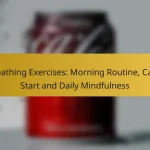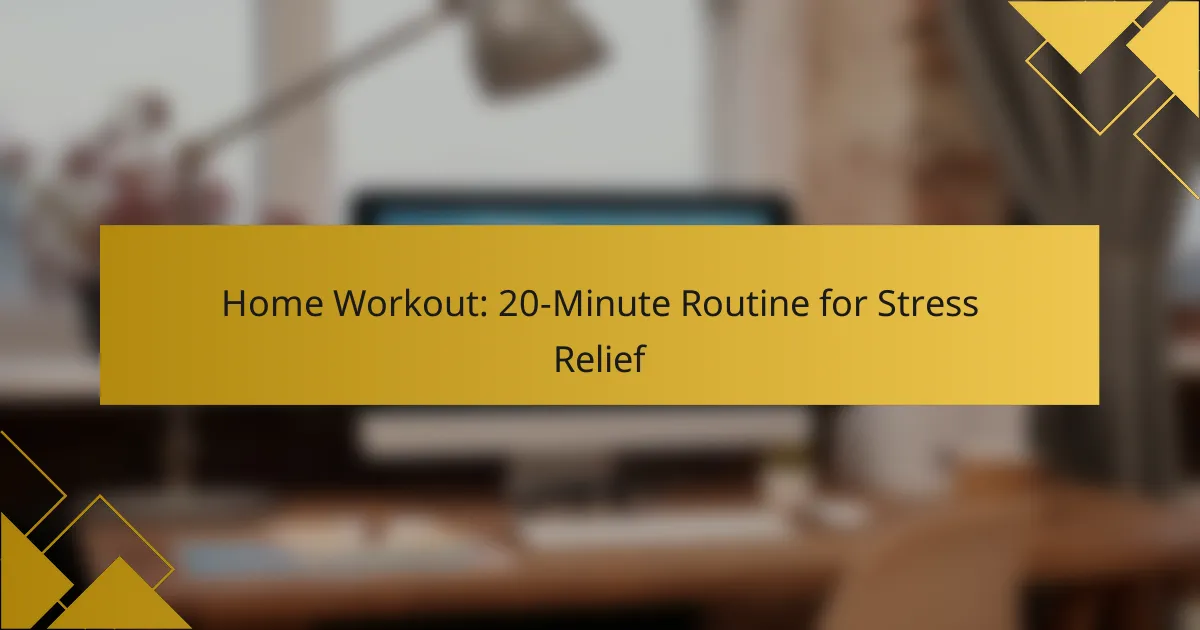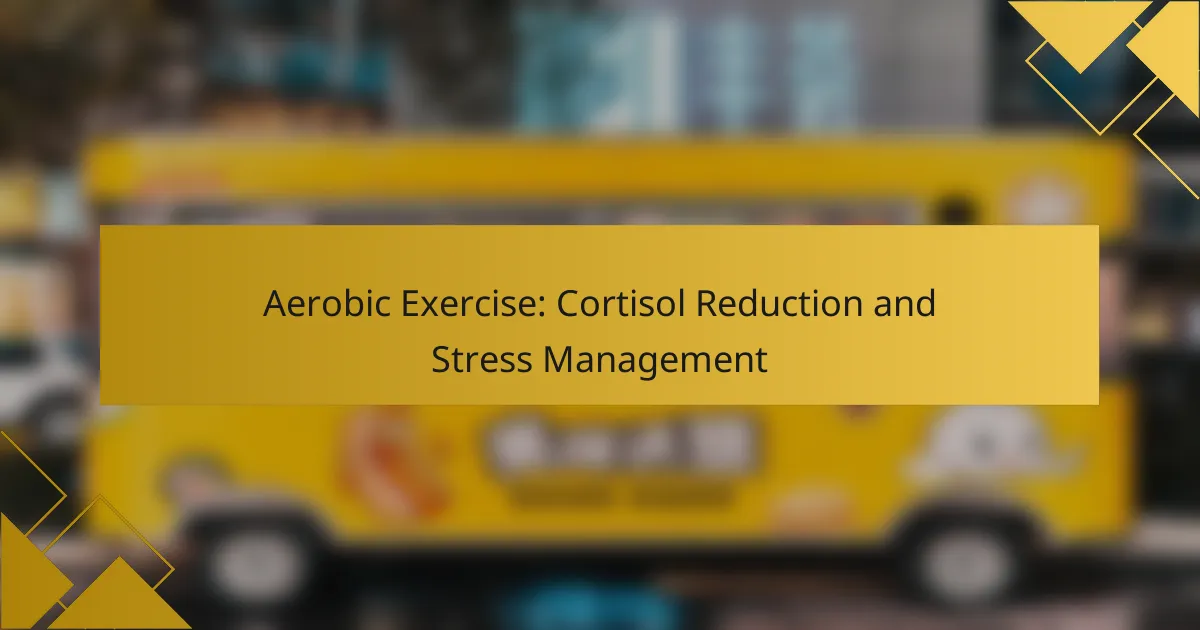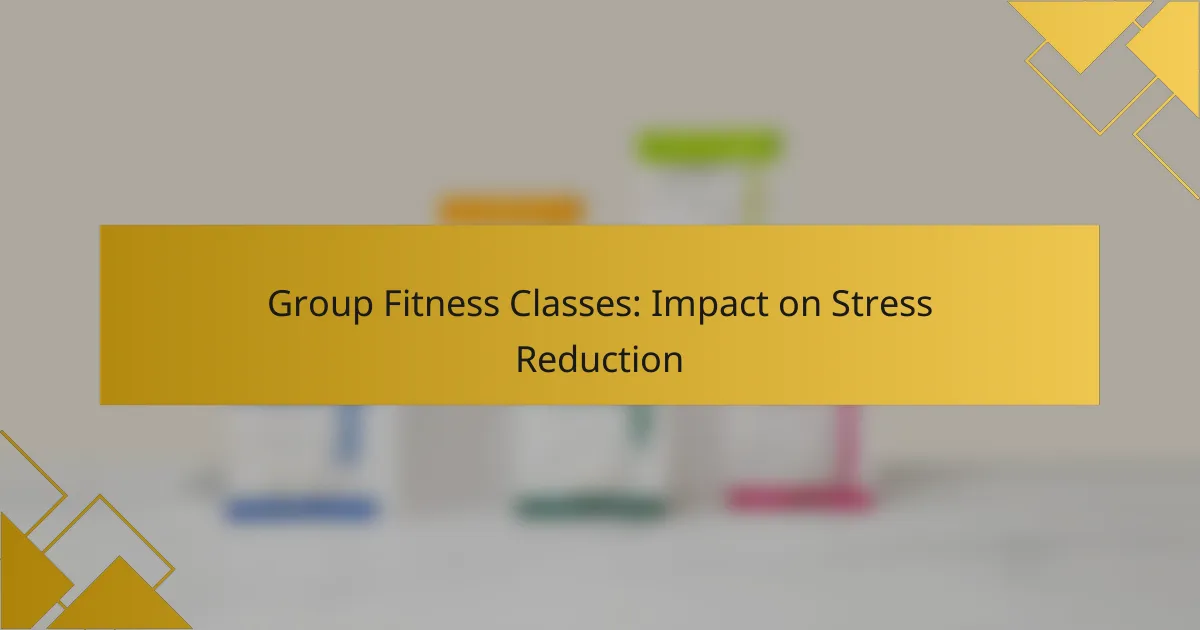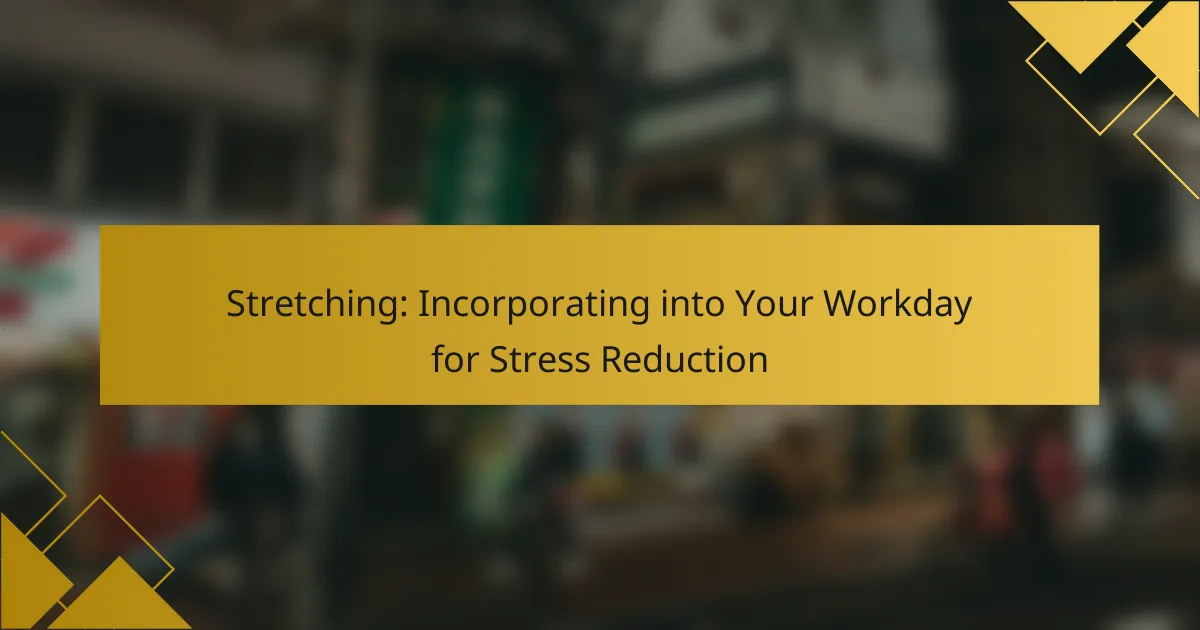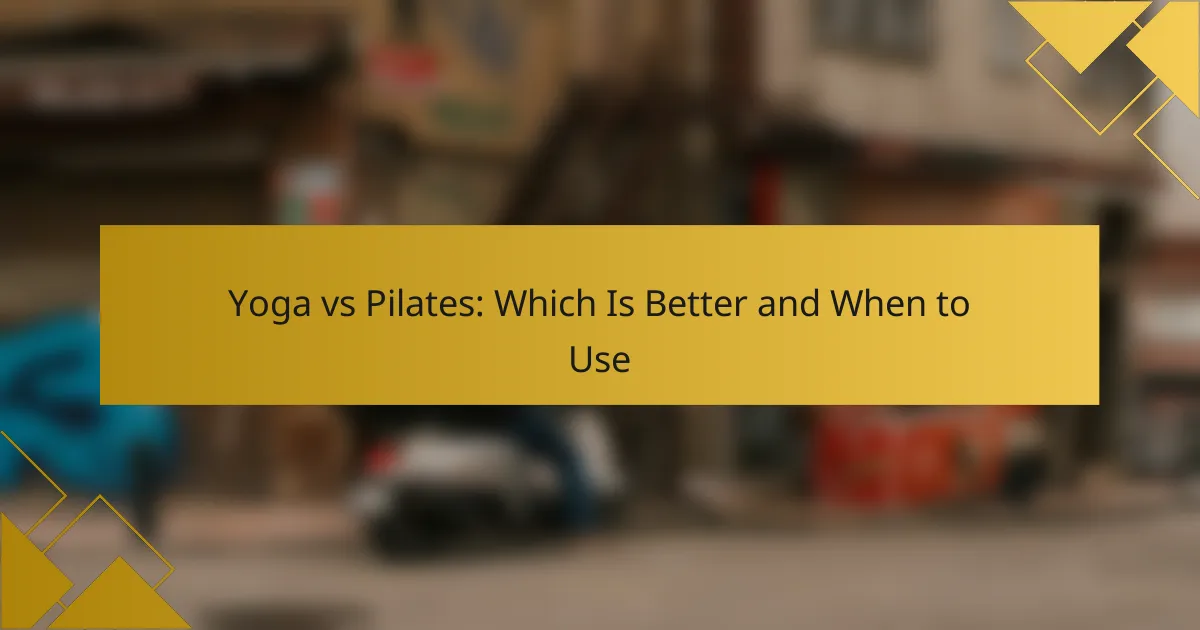In just 20 minutes, you can engage in a home workout that effectively alleviates stress by boosting endorphin levels and providing a much-needed mental break. This routine combines bodyweight exercises to elevate your heart rate and engage multiple muscle groups, all without the need for equipment. By incorporating a warm-up, high-intensity intervals, and a cool down, you can maximize the benefits of your workout and enhance your overall well-being.
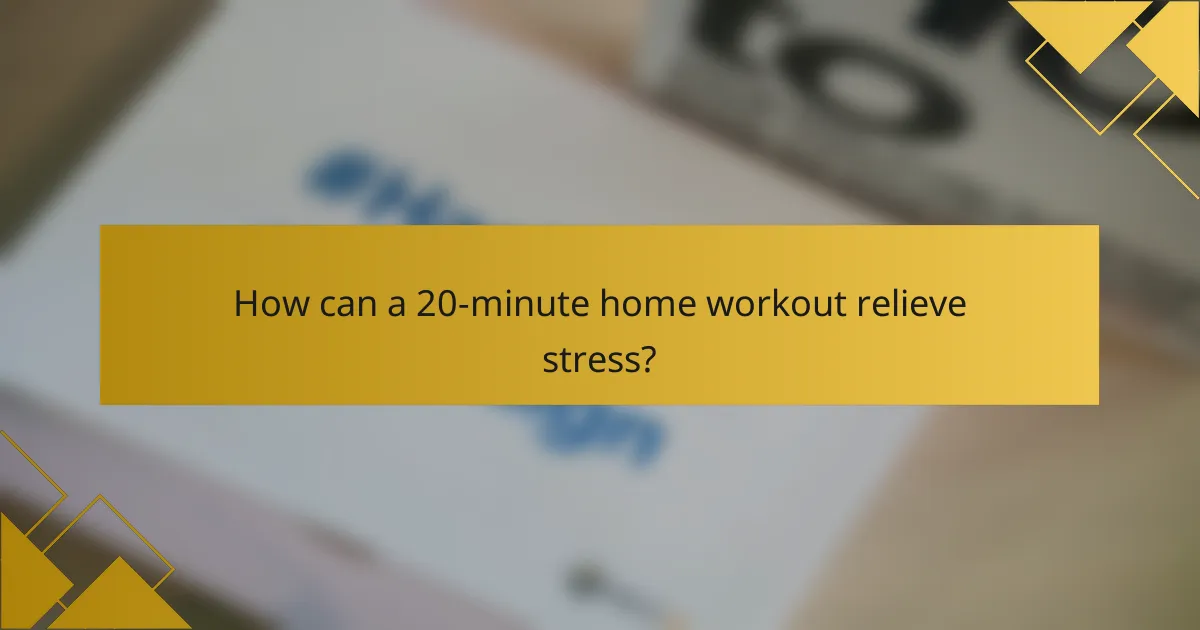
How can a 20-minute home workout relieve stress?
A 20-minute home workout can effectively relieve stress by promoting the release of endorphins and providing a mental break from daily pressures. Engaging in physical activity for a short duration can enhance your mood, improve focus, and help you feel more relaxed overall.
Increases endorphin levels
Exercise triggers the release of endorphins, which are chemicals in the brain that act as natural painkillers and mood elevators. This surge in endorphins can create feelings of happiness and euphoria, often referred to as the “runner’s high.” Even a brief workout can lead to a noticeable increase in these feel-good hormones.
To maximize endorphin release, consider incorporating high-intensity intervals or aerobic exercises like jumping jacks, burpees, or brisk jogging in place during your 20-minute routine.
Improves mood and focus
Physical activity has been shown to enhance mood and cognitive function. A short workout can clear your mind, reduce anxiety, and help you concentrate better on tasks afterward. This is particularly beneficial during stressful periods when mental clarity is essential.
Incorporate exercises that require coordination and focus, such as yoga or pilates, to further sharpen your mental acuity while relieving stress.
Reduces muscle tension
Exercise helps to alleviate muscle tension that often accompanies stress. Stretching and movement can promote blood flow, which aids in relaxing tight muscles and reducing discomfort. This physical release can lead to a greater sense of relaxation and well-being.
Include stretching exercises or gentle movements like neck rolls and shoulder shrugs in your routine to specifically target areas where tension tends to accumulate.
Enhances sleep quality
Regular physical activity, even in short bursts, can improve sleep quality, which is crucial for stress management. Exercise helps regulate sleep patterns and can lead to deeper, more restorative sleep. This is especially important for those who experience stress-related insomnia.
To benefit your sleep, aim to complete your workout at least a few hours before bedtime, allowing your body to wind down naturally after physical exertion.
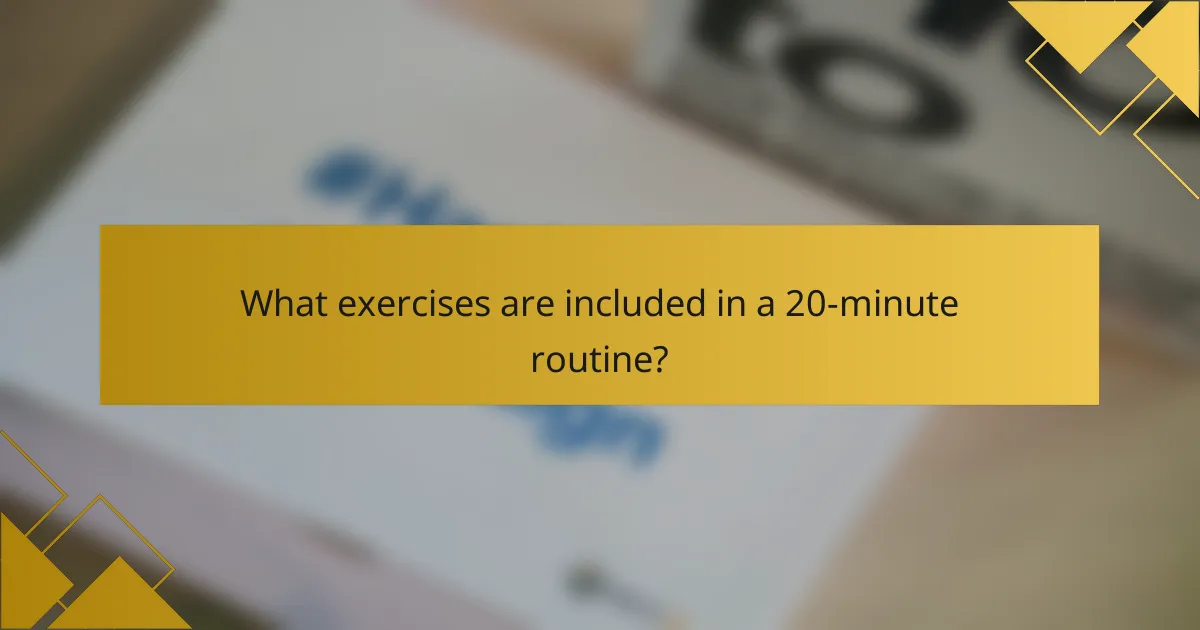
What exercises are included in a 20-minute routine?
A 20-minute workout routine for stress relief typically includes a combination of bodyweight exercises that engage multiple muscle groups and elevate heart rate. This efficient routine can be done at home without any equipment, making it accessible for everyone.
Bodyweight squats
Bodyweight squats are a fundamental exercise that targets the legs and glutes while also engaging the core. To perform a squat, stand with feet shoulder-width apart, lower your body by bending your knees, and keep your chest up. Aim for 10-15 repetitions to start, focusing on maintaining proper form.
To increase intensity, consider adding a jump at the end of each squat or holding weights if available. Ensure your knees do not extend past your toes to prevent injury.
Push-ups
Push-ups are excellent for building upper body strength, particularly in the chest, shoulders, and triceps. Begin in a plank position with hands slightly wider than shoulder-width apart, then lower your body until your chest nearly touches the ground. Start with 5-10 repetitions, adjusting as needed based on your fitness level.
If standard push-ups are too challenging, modify by performing them on your knees or against a wall. Focus on keeping your body in a straight line from head to heels or knees to shoulders.
Plank holds
Plank holds are effective for strengthening the core and improving stability. To perform a plank, position yourself face down, resting on your forearms and toes, keeping your body straight. Aim to hold the position for 20-30 seconds, gradually increasing the duration as you build strength.
Ensure your hips do not sag or rise too high during the hold. For added challenge, you can try side planks or plank variations, such as lifting one leg or arm.
Jumping jacks
Jumping jacks are a great cardiovascular exercise that helps to elevate your heart rate and improve coordination. Start by standing with your feet together and arms at your sides, then jump while spreading your legs and raising your arms overhead. Aim for 30 seconds to 1 minute of continuous movement.
To modify the intensity, you can perform a slower version by stepping side to side instead of jumping. This exercise can serve as a warm-up or a way to break up the routine with bursts of energy.
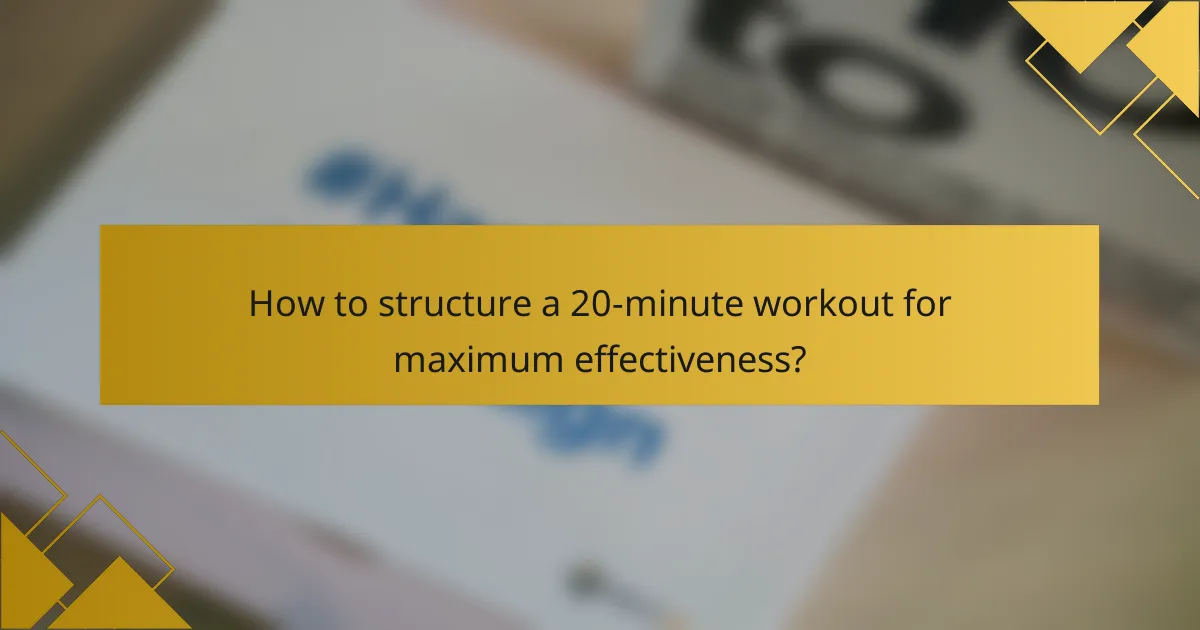
How to structure a 20-minute workout for maximum effectiveness?
To structure a 20-minute workout for maximum effectiveness, focus on a balanced approach that includes a warm-up, high-intensity intervals, and a cool down. This combination helps prepare your body, boosts your heart rate, and aids in recovery, ensuring you get the most out of your limited time.
Warm-up for 3 minutes
A proper warm-up is essential to prepare your muscles and joints for the workout ahead. Spend about three minutes engaging in dynamic movements such as arm circles, leg swings, and light jogging in place to increase your heart rate and flexibility.
Consider incorporating exercises like jumping jacks or high knees to elevate your body temperature. This will help reduce the risk of injury and improve your overall performance during the high-intensity intervals.
High-intensity intervals
High-intensity intervals should make up the bulk of your 20-minute workout, ideally lasting around 12 to 15 minutes. Alternate between short bursts of intense activity and brief recovery periods. For example, you might sprint for 30 seconds followed by 30 seconds of walking or resting.
Choose exercises that engage multiple muscle groups, such as burpees, mountain climbers, or squat jumps. Aim for a total of 4 to 6 intervals, adjusting the intensity based on your fitness level. This approach maximizes calorie burn and stress relief in a short time.
Cool down for 3 minutes
A cool down is crucial for gradually lowering your heart rate and aiding recovery. Spend the last three minutes of your workout performing static stretches, focusing on major muscle groups like your legs, arms, and back.
Hold each stretch for 15 to 30 seconds, breathing deeply to promote relaxation. This not only helps prevent muscle soreness but also enhances flexibility and mental clarity, contributing to overall stress relief after your workout.
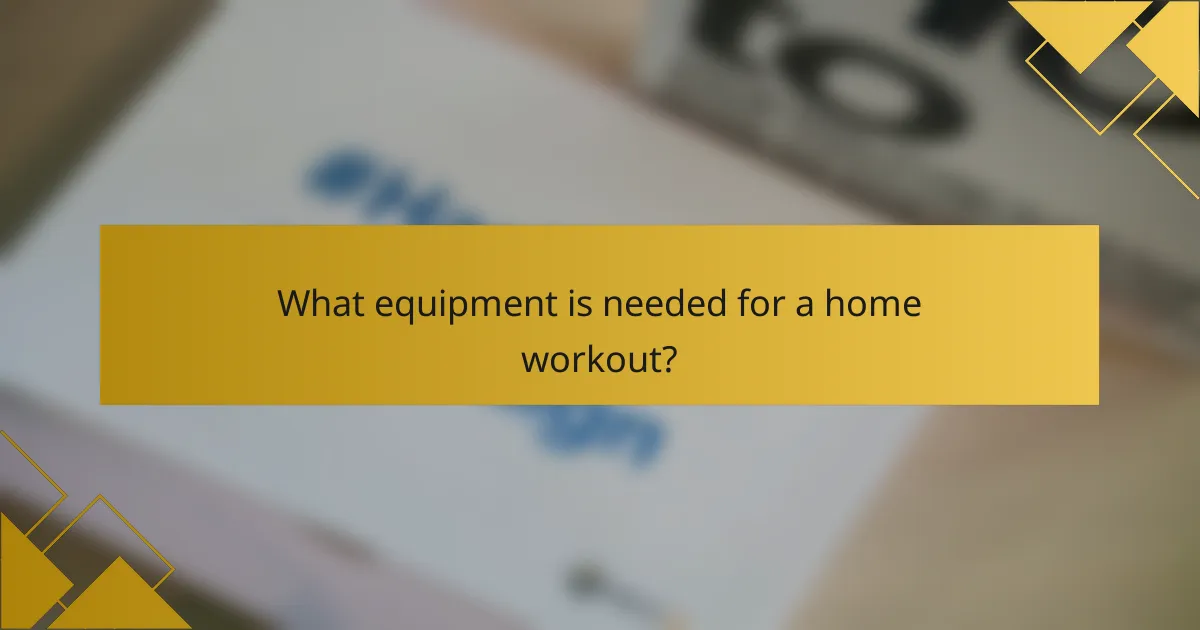
What equipment is needed for a home workout?
For an effective home workout, minimal equipment can enhance your routine significantly. Essential items include a yoga mat, resistance bands, and dumbbells, each serving distinct purposes to improve strength, flexibility, and overall fitness.
Yoga mat
A yoga mat provides a comfortable and non-slip surface for various exercises, including stretching, yoga, and core workouts. It helps protect your joints and offers stability during movements.
When choosing a yoga mat, look for thickness and material that suit your needs. Mats typically range from 4mm to 8mm in thickness, with options like PVC, TPE, or natural rubber. A good grip is essential, especially for dynamic workouts.
Resistance bands
Resistance bands are versatile tools that add varying levels of resistance to your workouts, enhancing strength training and flexibility. They come in different thicknesses, providing options for beginners to advanced users.
Consider bands with handles or loops for ease of use. They can be used for exercises targeting different muscle groups, such as squats, rows, and shoulder presses. Always check for wear and tear to ensure safety during workouts.
Dumbbells
Dumbbells are fundamental for building strength and can be used for a wide range of exercises. They come in various weights, typically ranging from 1 kg to 10 kg for beginners, allowing you to gradually increase resistance as you progress.
When selecting dumbbells, consider adjustable options for versatility or fixed weights for simplicity. Ensure they are comfortable to grip and suitable for your workout space. Proper form is crucial to avoid injury, so start with lighter weights if you’re new to strength training.

What are the benefits of a home workout routine?
A home workout routine offers numerous benefits, including convenience, flexibility, and cost savings. By exercising at home, individuals can create a personalized fitness schedule that fits their lifestyle and budget.
Convenience and flexibility
Home workouts allow you to exercise whenever it suits you, eliminating the need to travel to a gym. This flexibility means you can fit in a workout around your daily commitments, whether that’s early in the morning or late at night.
Additionally, you can choose the type of workout that best aligns with your preferences, whether it’s yoga, strength training, or cardio. This personal choice can enhance motivation and adherence to your fitness routine.
Cost-effective
Exercising at home can significantly reduce costs associated with gym memberships, travel, and workout classes. Many effective home workouts require little to no equipment, making it accessible for most budgets.
For those looking to save money, consider utilizing free online resources such as workout videos or fitness apps. Investing in a few basic items, like dumbbells or resistance bands, can also enhance your home workout experience without breaking the bank.
